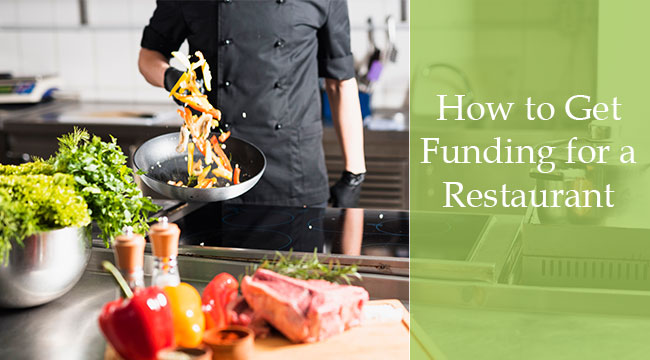There are more than a million restaurants in the United States, according to the National Restaurant Association, but the vast majority of those restaurants are very small businesses. 9 out of 10 restaurants have fewer than 50 employees.
But there’s good news in the restaurant business: wealth is growing there faster than in the economy at large. The number of middle class jobs ($45k-$75k) in the restaurant industry grew 84% between 2010 and 2018, which was more than 3 times faster than in the economy at large.
So starting a restaurant seems like a manageable, profitable enterprise to get involved in, if you have the passion for hard work and good food. But how do you get started? You probably don’t have the money to lease a space, buy equipment and food, do your marketing, and hire staff all on your own. Where can you find the money?
There are a lot of loan programs that are perfectly suited toward the restaurant industry and starting your own business. Here are a few of them.
Traditional Small Business Loan
A traditional loan through a bank is the typical way most small businesses get started. It is a tricky process as it requires a lot of information, and not just your credit score and financial statements but also business plan documentation.
The good news is that if you’re approved, you can get a fairly low interest rate, because to qualify the lender must think that you’re a good investment and that they’re confident they’ll get their money back on time. The process takes a long time, and you may inevitably get rejected once or twice as you work your way through various lenders.
SBA Loans
A loan that is backed by the Small Business Administration is a great option as it’s tailor-made to fit just this kind of restaurant business. Through a 7(a) loan program, the SBA guarantees most of the lender’s loan, so the lender isn’t as worried about the riskiness of the investment. They’re more willing to take a chance on you and your new restaurant.
Generally, these types of SBA loans are not intended for businesses that are just getting off the ground. Most lenders want you to be in business for at least two years with a moderate credit score.
Pre-qualification can take place in minutes, and assuming all goes smoothly, you can have cash in hand in 4 weeks. You’ll have to go through some of the same process as a traditional loan–showing profit and loss statements, balance sheets, and other documents, but generally you don’t need to show a full business plan.
Approval amounts can range from $30,000 to $350,000, and repayment terms can be 6-10 years.
Term Loans
This loan also requires you to have been in business for a couple of years, but is generally easier to obtain than an SBA loan. These are faster to get the money, but the repayment time will be shorter and has strict approval procedures, including seeing your tax returns, your credit score, your profit and loss, and other financial data reports.
A Term Loan can be between $30,000 and $200,000 and must be repaid within 2-5 years.
Equipment Financing
Say you have a small restaurant, but you need a new large oven, or dishwashing equipment. This financing option is a great one, as it can be processed very quickly. Approvals can take place in 1-2 days, and funding can happen in as little as a week. You’ll need to show proof of the cost of the equipment and your credit score, and you must currently be in business.
Payments are made monthly, and a typical repayment term would be over 1-5 years.
Line of Credit
A line of credit is a great thing for every small business owner to have, as it’s money injected into your checking account as you need it (unlike a credit card) and is very flexible in how you can spend it. This is typically used for regular purchases, like replenishing your inventory.
A line of credit can be approved in as little as a day, and can be funded just as quickly. This won’t happen in every case, but it is a valuable option.
Working Capital Advance
This might be one of the easiest funding options due to the lower requirements. With Small Business Funding, for example, you could qualify for a Working Capital Advance with only 6 months in business, $15,000/month in revenue, and a 500 credit score.
A working capital advance works by giving you a large lump sum up front and then taking a slice of your future sales. The repayment amount is usually a set amount which is agreed upon between you and the lender. This is then repaid daily or weekly.
A working capital advance was created to give businesses, who would otherwise get declined by a bank, an opportunity to receive working capital. But keep in mind the cost of this type of funding is typically higher than other options.
Credit Cards
These can be a tempting way to finance a new business, but remember that they also have dangerous interest rate possibilities. Putting $20,000 on a credit card with a low interest rate may not seem like a bad idea until your business doesn’t take off like you thought it would and you miss a payment or two, and suddenly you’re paying 25% interest with a damaged credit score.
Home Equity Loan/Second Mortgage
A home equity loan is essentially a secured loan that secures your home as collateral, similar to a mortgage. When applying for this kind of loan you don’t have to tell the lender what you’re using the money for and you can use it to start up a new business. But if the restaurant goes out of business (and remember that 50% of all small businesses go out of business in five years) then you’re out of a job and out of a house.
Restaurant Grants
The Small Business Administration has joined forces with several organizations to offer grants for starting a restaurant. All small business owners, including restaurateurs, can apply for grants through the SBA website.
Also there are small business grants for restaurants available at the state level. These often have stipulations attached, such as that you must buy local ingredients from the community, but they are a good option–though qualification is limited.

